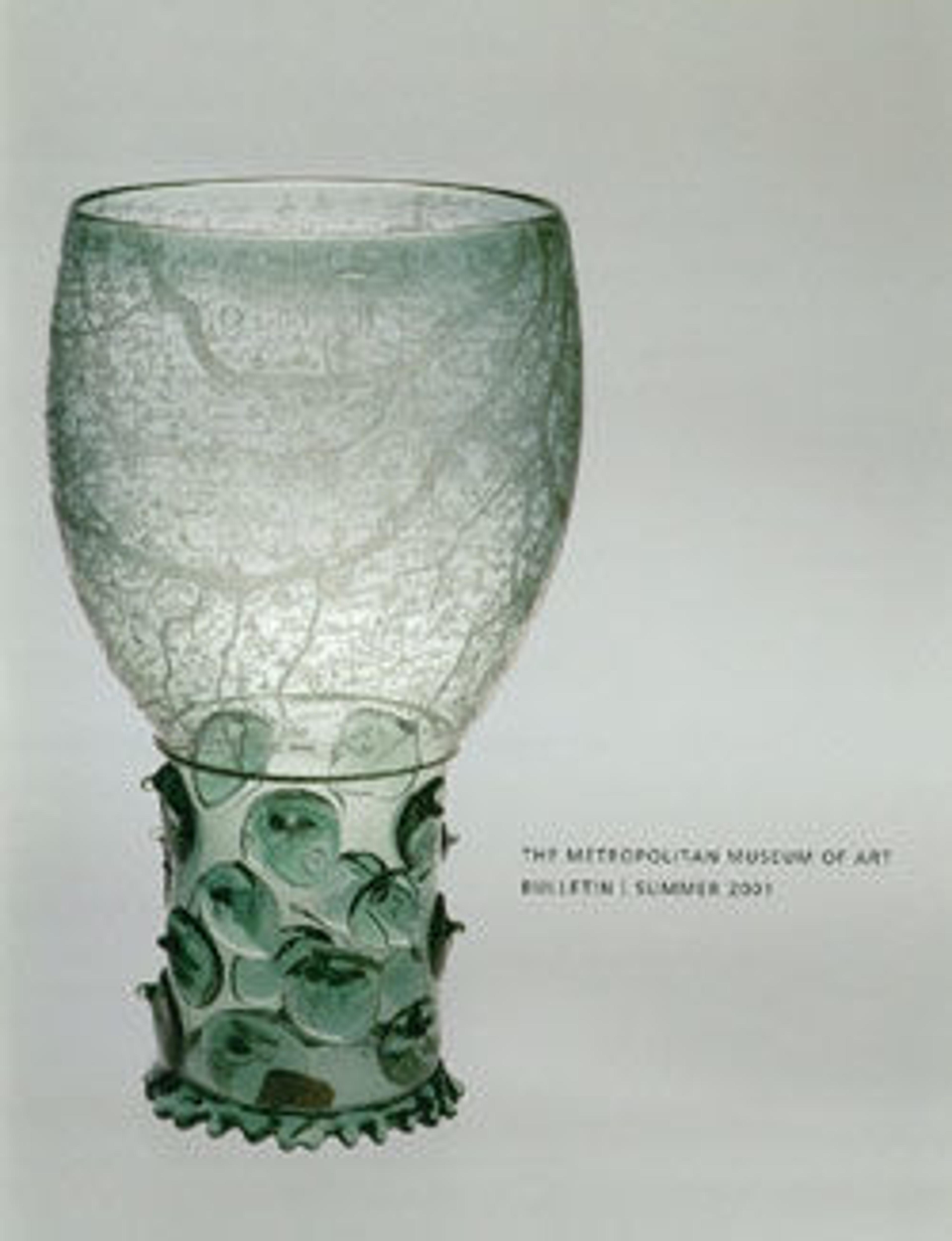Floral plaque
Glass plaques were employed in the Hellenistic and Roman Mediterranean world to decorate walls, screens, and furnishings. This particular fresh and exuberant floral type was popular chiefly in Egypt and was probably manufactured in Middle Egypt.
Panels of this sort, which are thought to have originally been up to six inches tall and just under three inches wide, exhibit a characteristic set of vegetal motifs. While correlations to actual species are difficult to make, three nelumbo lotus flowers can be identified at the bottom of this plaque, and what appear to be two grape clusters are recognizable at either side of the fanlike group of leaves in the center.
The plaque was made by fusing cross sections of mosaic canes, colored strips, and chips of bluish green glass, with an added backing of chips and waste glass for thickening. The front was then ground and polished to smoothness. The slight translucency of the matrix glass is an effect of backlighting and would not have been apparent when the panel was set in place
Panels of this sort, which are thought to have originally been up to six inches tall and just under three inches wide, exhibit a characteristic set of vegetal motifs. While correlations to actual species are difficult to make, three nelumbo lotus flowers can be identified at the bottom of this plaque, and what appear to be two grape clusters are recognizable at either side of the fanlike group of leaves in the center.
The plaque was made by fusing cross sections of mosaic canes, colored strips, and chips of bluish green glass, with an added backing of chips and waste glass for thickening. The front was then ground and polished to smoothness. The slight translucency of the matrix glass is an effect of backlighting and would not have been apparent when the panel was set in place
Artwork Details
- Title: Floral plaque
- Period: Ptolemaic Period–Roman Period
- Date: 100 BC–100 AD
- Geography: From Egypt
- Medium: Glass
- Dimensions: H. 8.8 × W. 6.7 cm (3 7/16 × 2 5/8 in.)
- Credit Line: Purchase, Edward S. Harkness Gift, 1926
- Object Number: 26.7.1249
- Curatorial Department: Egyptian Art
More Artwork
Research Resources
The Met provides unparalleled resources for research and welcomes an international community of students and scholars. The Met's Open Access API is where creators and researchers can connect to the The Met collection. Open Access data and public domain images are available for unrestricted commercial and noncommercial use without permission or fee.
To request images under copyright and other restrictions, please use this Image Request form.
Feedback
We continue to research and examine historical and cultural context for objects in The Met collection. If you have comments or questions about this object record, please contact us using the form below. The Museum looks forward to receiving your comments.
